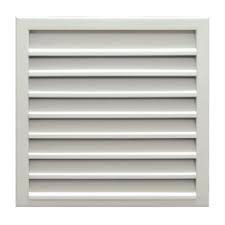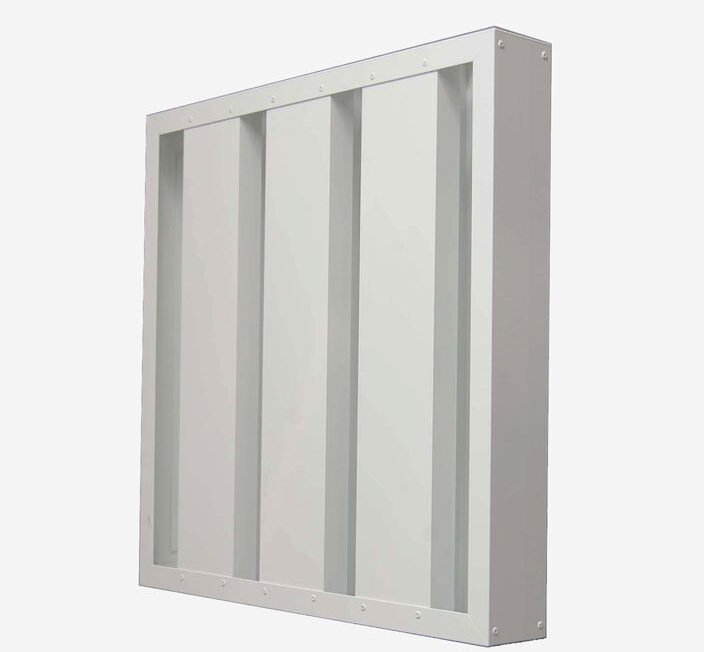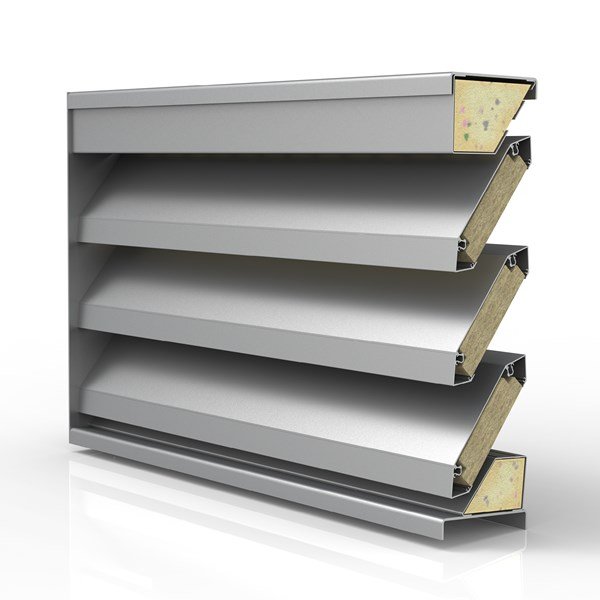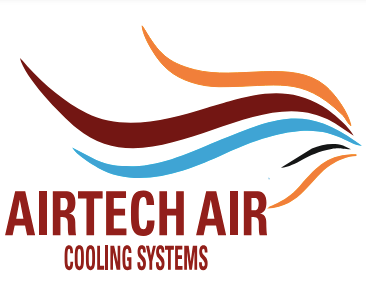Louvers
Louvers are slatted structures that facilitate airflow while blocking rain, debris, and pests, commonly used in HVAC systems and building exteriors.

Intake Louver
An intake louver is a slatted opening typically seen in ventilation systems, enabling the passage of air while preventing the entry of debris or unwanted elements. It’s commonly found on building exteriors and machinery to facilitate controlled airflow.

Gravity louver
A gravity louver is a type of ventilation component that uses gravity to open and close its slats, allowing air to pass through while preventing the entry of rain or debris. It is commonly used in HVAC systems to facilitate passive airflow.

Sandtrap louver
A sandtrap louver is a specialized ventilation component designed to filter out sand and dust particles from the air before it enters a building or HVAC system. It’s commonly used in environments with high levels of airborne particulate matter, such as desert regions or industrial sites.

Acoustic Louver
An acoustic louver is a ventilation component designed to reduce noise transmission while allowing air to flow through. It is commonly used in buildings and industrial facilities to maintain sound insulation without compromising on ventilation efficiency.

Combination Louver
A combination louver is a versatile ventilation component that integrates multiple functions, such as air intake, exhaust, and protection against rain and debris. It is commonly used in HVAC systems to streamline airflow management while providing weather resistance and filtration capabilities.

Exhaust Louver
An exhaust louver is a ventilation component designed to allow air to exit a building or system while preventing the entry of rain, debris, and pests. It is commonly used in HVAC systems to facilitate the expulsion of stale or contaminated air from indoor spaces.
